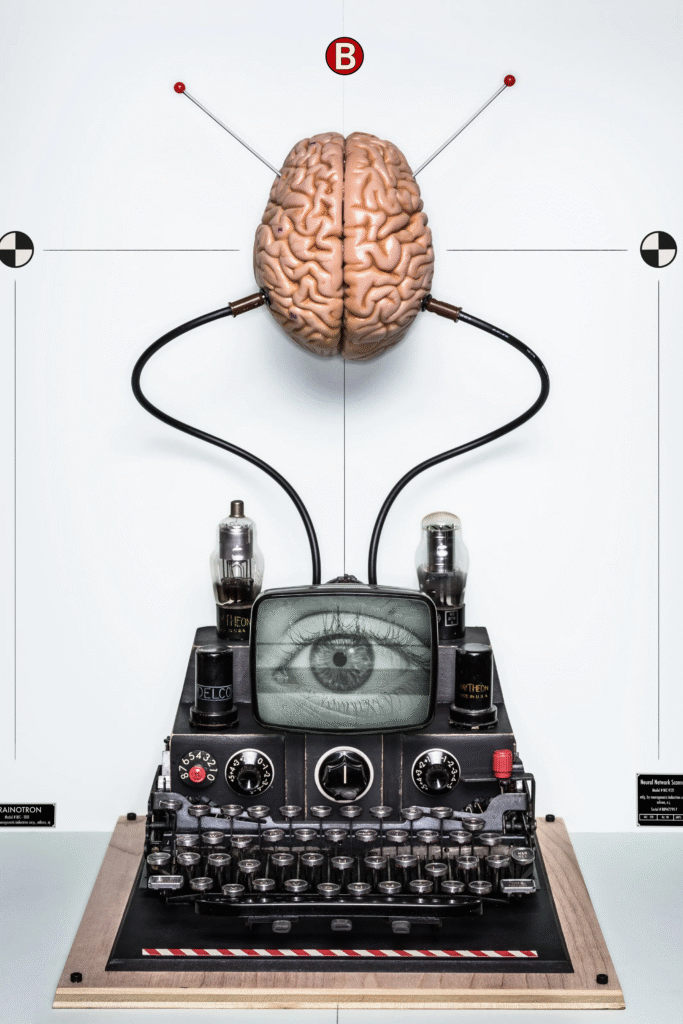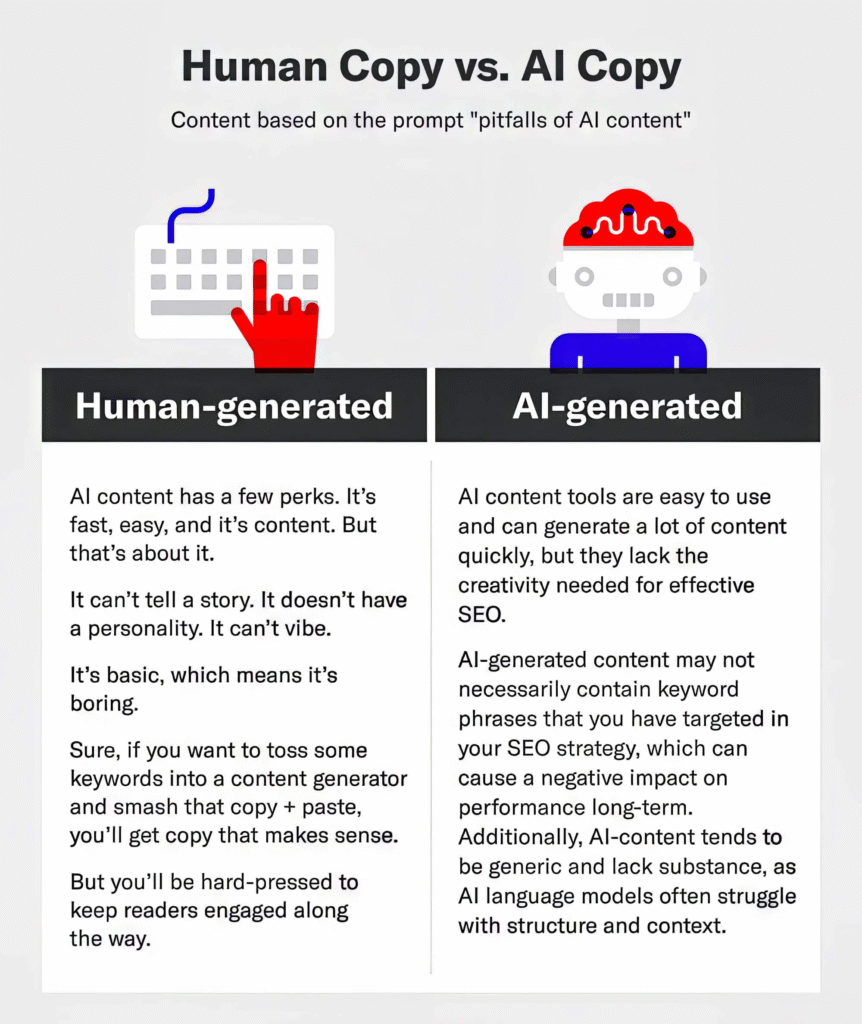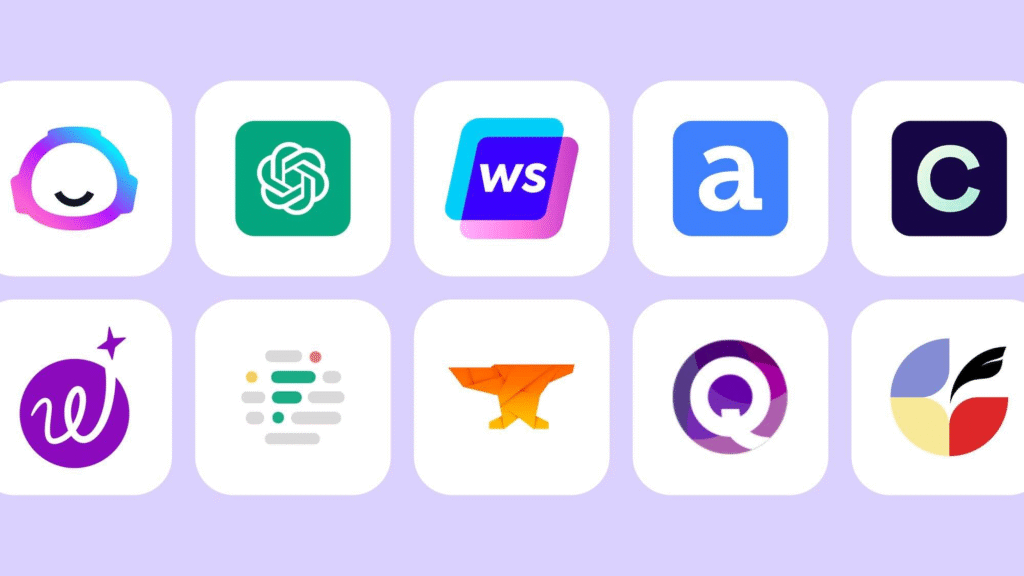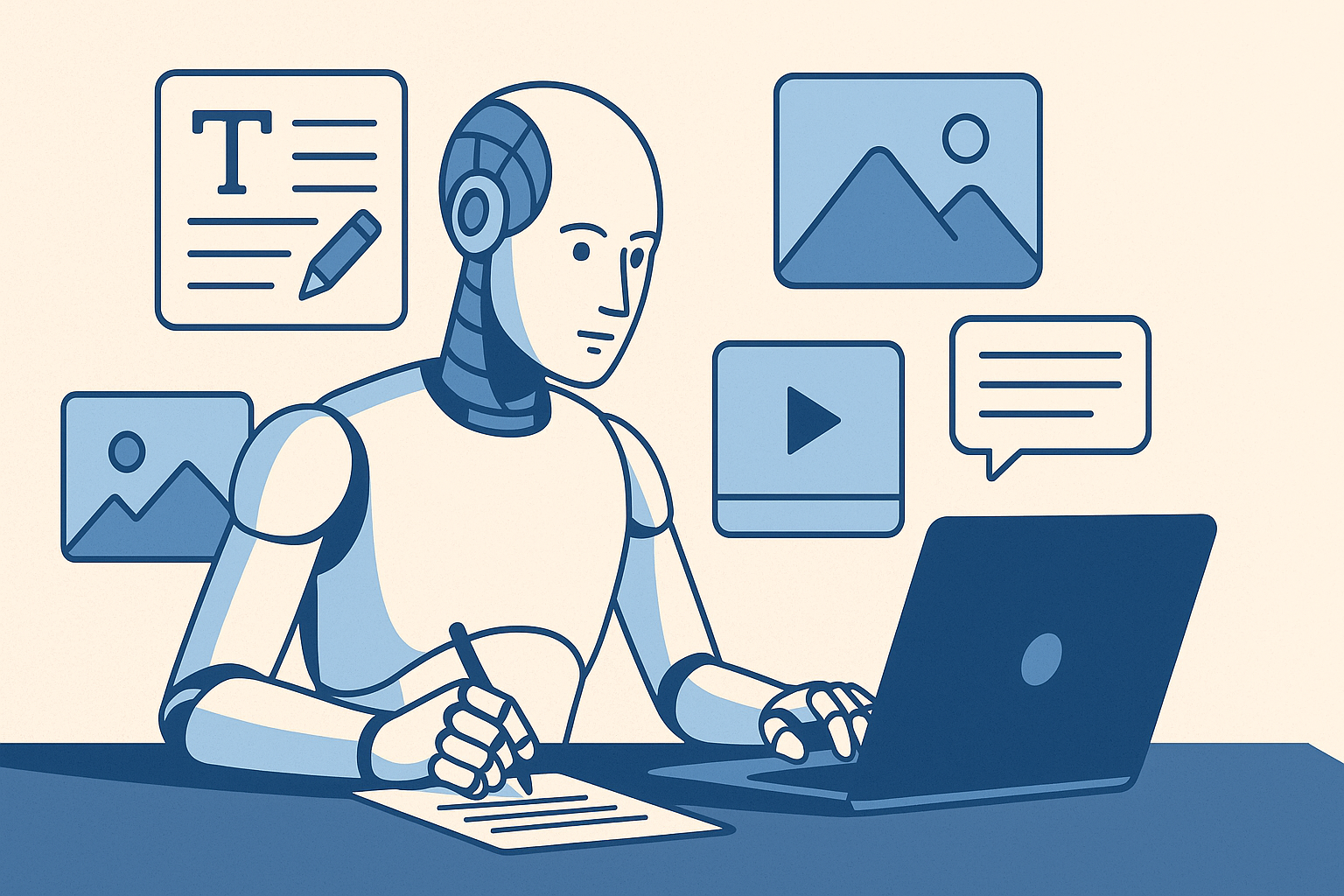The Rise of Generative AI: What It Means for Content Creation
Generative AI Introduction
Imagine a tool that can brainstorm headlines, write blog drafts, create images, and even mimic your tone—in seconds. That’s the magic of generative AI. But it’s not just magic. It’s mechanics, algorithms, and evolving intelligence built to replicate human-like creation. And it’s shifting everything we know about content.
I still remember the first time I tried a generative tool. It wasn’t perfect, but it was fast. That speed unlocked a new workflow I never knew I needed. From brainstorming ideas to polishing final drafts, my writing routine evolved rapidly. And I’m not alone. From independent creators to entire marketing teams, workflows are shifting dramatically—and the ones adapting fastest are reaping the benefits.
With each release of newer models, the line between human and machine-generated content blurs even more. Generative AI is no longer a curiosity—it’s the new foundation.
So, how did we get here? And more importantly, where are we going?

Why This Matters Now
With over 60% of marketing teams already integrating AI tools into their processes (Salesforce, 2024), the age of AI-assisted content is no longer optional—it’s essential. But it’s not just about output volume. It’s about:
- Saving time on repetitive tasks like summarization, outlining, and rephrasing.
- Scaling quality across teams with consistent tone and structure.
- Unlocking creativity at the idea stage, helping beat writer’s block and creative fatigue.
- Testing ideas faster, so decision-makers can iterate without burning through budgets.
For solopreneurs, this means competing with teams. For large brands, it means cutting waste while boosting output. It’s no longer a question of if you should adopt AI, but how.
The urgency is amplified by rapidly evolving models. Waiting too long risks not just inefficiency, but irrelevance.
What Is Generative AI, Really?
Generative AI refers to algorithms capable of creating new content—text, images, audio, code, and more—based on patterns it has learned from existing data.
In simpler terms? It’s like training a super intern on billions of examples… and it never forgets.
These models are “generative” because they don’t just analyze—they produce. Unlike traditional automation that relies on rules, generative AI uses deep learning (especially transformers) to generate outputs that feel dynamic, fluid, and surprisingly human.
Key Technologies:
- GPT-4 & Claude (text generation and conversation)
- Midjourney & DALL·E (visual art creation)
- RunwayML & Pika (video editing and generation)
- MusicLM (audio/music creation)
- Suno AI & ElevenLabs (voice and speech synthesis)
These tools draw from massive datasets, learning not only language patterns but also tone, sentiment, and visual style. That’s what makes them powerful—and potentially dangerous.
How Generative AI Is Changing the Content Game

Let’s break it down:
1. Content Velocity
AI can generate outlines, drafts, and even polished pieces in minutes. What used to take hours of ideation and structuring can now happen in real time. This is a game-changer for SEO-driven content and newsrooms.
2. Content Personalization
Personalized emails. Dynamic landing pages. Region-specific copy. AI allows for hyper-targeted messaging at scale, with natural language that fits the audience.
3. Visual Storytelling
No more settling for stock images. Tools like Midjourney or Ideogram let creatives generate visuals that match brand aesthetics and campaign goals with minimal design skills.
4. Multilingual Reach
Why hire 10 translators when GPT-4 and DeepL can localize content in seconds? This unlocks new markets and improves global engagement.
5. SEO Optimization
Keyword clustering, SERP gap analysis, competitor benchmarking—all can be handled by AI tools like Surfer SEO or NeuronWriter. It’s like having an SEO analyst on call 24/7.
6. Multimedia Integration
With tools like Descript, you can turn text into podcasts, generate transcripts, and even clone your voice—bringing a whole new dimension to content repurposing.
Common Myths Debunked
Myth 1: AI Will Replace All Writers
Truth: It will replace bad writing. Writers who adapt and use AI as a tool will become more valuable, not less.
Myth 2: AI Content Is All Generic
Not true. With detailed prompting and smart editing, AI can emulate brand voice, insert humor, and capture nuance.
Myth 3: Using AI Is “Cheating”
No more than spellcheck or Grammarly is cheating. Tools are here to assist. AI is the calculator for creatives—you still need to know the formula.
Myth 4: AI Always Gets It Right
Nope. AI can hallucinate, misquote, and invent facts. Human review is essential. Think of it as a fast drafter, not a final word.
Tools Powering This Movement

Here are some of the tools transforming how we work:
- ChatGPT & Claude – For conversational writing and research
- Jasper – Tailored for marketers, brand voice templates
- Copy.ai – Short-form, product copy, email marketing
- Surfer SEO & NeuronWriter – On-page SEO, content scoring
- Midjourney & DALL·E – Custom illustrations, visual assets
- RunwayML – Video generation and special effects
- ElevenLabs – Lifelike AI voiceovers
- Descript – Podcast editing, screen recording, AI transcription
Each of these tools has its strengths. The secret is combining them based on your workflow.
Challenges & Ethical Concerns
No revolution is without friction. Some key risks:
- Bias in training data – Most models are trained on web data, which includes historical biases and stereotypes.
- Plagiarism & IP issues – AI may generate content too close to copyrighted material.
- Displacement of creative jobs – Especially in junior-level roles or low-paying markets.
- Over-reliance – Blind faith in AI can lead to inaccurate or hollow content.
- Authenticity – Audiences are starting to demand disclosure: “Was this made with AI?”
Best Practices:
- Always fact-check AI-generated content.
- Use plagiarism checkers like Originality.ai.
- Maintain a strong human editorial layer.
- Declare when content is AI-assisted (for transparency).
What This Means for Writers, Marketers, and Creators
Here’s the new reality: If you’re not using AI, your competitors are—and they’re working faster.
But you don’t need to become a full-time prompt engineer. You do need to:
- Learn to prompt effectively: The more specific your input, the better the output.
- Curate your AI toolkit: Choose tools that match your goals and voice.
- Guard your creativity: Don’t outsource everything. Your perspective still matters.
- Evolve your role: Writers become creative directors. Strategists become orchestrators of AI-human collaboration.
Think of AI not as your replacement, but as your exosuit. You still decide where to go—it just gets you there faster.
FAQ
What is generative AI used for?
It’s used for creating content like articles, images, videos, music, and even code based on learned data.
Can generative AI replace writers?
No, but it can assist them—especially with drafts, research, and repetitive tasks.
Is AI-generated content good for SEO?
Yes—when edited and structured properly. AI helps with keyword alignment, content gaps, and optimization.
Are there risks in using AI for content?
Yes. Without oversight, it can produce biased, inaccurate, or low-quality output. Human editing is still essential.
Do audiences care if content is AI-generated?
Increasingly, yes. Brands need to find a balance between scale and authenticity.
What skills will be most valuable in an AI-driven content world?
Strategic thinking, ethical prompting, creative direction, and editorial judgment.
Final Thoughts
Generative AI isn’t the end of human creativity—it’s a new chapter in it. Like any powerful tool, its impact depends on how we use it.
If you’re a creator, now’s the time to explore. Experiment. Combine your intuition with AI’s speed. There’s never been a better moment to build something remarkable.
Want to learn more about how to ethically and effectively use AI in content workflows? Read our guide: The Ethical Prompting Blueprint for Content Creators

Pingback: AI in Healthcare: How AI Is Saving Lives
Pingback: AI in Financial Markets: How Algorithms Are Changing Investing
Pingback: AI-Powered Automation: The Future of Everyday Tasks
Pingback: AI Tools for WordPress Optimization: 7 Powerful Plugins
Pingback: Perplexity Assistant App: 9 Genius Robotactics